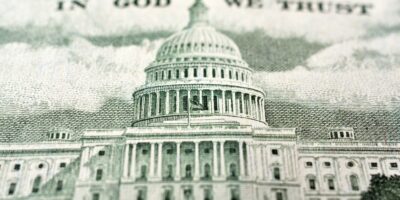The “Paradox of Thrift” Myth Is Back, Again

Anyone who grew up around people who lived through the Great Depression is aware of the unique “tics” that a decade of economic hardship saddled them with. They showed a strong reluctance to throw things away, preferring to fix them (if broken) or repurpose them — sometimes in creative ways. They would often keep a portion of every paycheck or financial distribution in physical cash, rarely inclined to fully trust banks. And they were inveterate savers and economizers: coupon clippers, bargain hunters, and — as was the case with my grandparents — budgeting, literally to the penny, each week or month.
Successive generations of Americans have saved less and less, giving rise to warnings that a growing portion of Americans are unprepared for sudden unemployment or broader economic shocks. And yet, after years of complaint and worry that people aren’t saving enough, recent Federal Reserve data indicate a point of inflection driven by millennials (adults presently aged between 24 and 39). Millennials are saving more than the last several generations, with some 25 percent holding savings in excess of $100,000.
And yet, pundits are finding reasons to worry. The paradox of thrift is, again, raising its gnarled and tired head.
John Maynard Keynes may not have been the first to put forth the notion that consumption is required to keep an economy growing, but he certainly popularized it: it’s a core component of Keynesian doctrine. The idea is that with increased savings comes less consumption, which means less revenue to companies. Increased saving at the expense of consumption across all income levels results in decreased aggregate demand, which results in lower output and thus less income for workers, with less corporate investment in facilities and new innovation, and ultimately lower levels of economic growth. The alleged paradox is therefore that while individual thrift is advisable for financial preparedness, a demographic or national propensity to save en masse is economically deleterious.
Millennials, perennially (and often unreasonably) panned as the destroyers of everything from golf to beer to doorbells, have ample reason for their inclination to save. Unlike Boomers and Gen Xers, they’ve never seen bouts of high inflation. And owing both to the drumbeat of warnings about the solvency of the Social Security system and their own experience with economic uncertainty during the so-called Great Recession, the idea of having some sort of financial cushion resonates with them.
And thus comes the scolding: it’s a disaster in the making, the pundits say. Millennials may make the Fed’s job harder during the next economic downturn, lamented the New York Times on Monday. Not only does their tendency to save pose a threat, the argument goes; their desire to retire early does as well. This is nothing but the classic case of the damage of a little learning: the overwhelming majority of people who study economics at all take a single economics class, espousing a single economic perspective, which leads to the pervasive spread of pernicious ideas.
People don’t save for nothing: all savings are intended for future consumption. While money sits in a bank, it is invested in enterprises through bank loans: millennial savings are in a very real sense financing and building the future. And as for alarmism about some imaginary state of underconsumption, consumption never completely evaporates: there are always essential purchases that must be made. Food, rent/mortgage, transportation, and entertainment necessities spur a constant baseline amount of consumption despite saving propensity.
And the assertion that businesses will necessarily stop investing in improvements to their products and services, or that they won’t respond to decreased consumption with innovation, is contrary to all experience. Declining consumption (if such occurs) tends to foster price competition and thus lower costs for consumers; it also spurs more consumer choice owing to differentiation and is likely to stimulate waves of new innovation, as firms seek new production methods to preserve profit margins and use factors of production more efficiently.
The Federal Reserve may indeed be constrained by shifting demographic propensities toward retirement — it is at odds with the expressed goal of many millennials to retire early — but the suggestion that either the millenials should be dissuaded or policy “nudges” applied is wholly inappropriate. In the first place, much can (and undoubtedly will) happen in the next few decades. The very suggestion that an entire wedge of society should either base its behavior upon, or alter its behavior to suit, the needs of a quasi-public agency staffed with unelected bureaucrats is one deserving of summary dismissal.
Yet there is irony in that suggestion: one of the founding tenets of the Social Security Administration in 1935 was, in part, to provide an incentive for older workers to exit the workforce in order to make room for young people entering the workforce. Yet the implied message is that millennials may exit the workforce “too soon.”
The ready embrace of the so-called “gig economy” by millennials, either as their main source of income or as a “side hustle,” should serve to alleviate concerns that, ceteris paribus, their retirements would be characterized by complete inactivity.
For some reason, people keep getting tricked by this alleged paradox of thrift. All during the Great Depression and World War II, Americans became extremely penurious with their money, saving it for a rainy day. After the war ended, the economics profession (swayed by Keynes’s fallacies) predicted disaster with returning soldiers and collapsed government spending. And yet the exact opposite happened, and the reason was the high savings rate of the previous decade. The unprecedented expansion of the 1950s would not have been possible without massive pools of savings to draw upon.
In light of their high degree of indebtedness (overwhelmingly in the form of student loans), the millennial instinct to save is surprising and meritorious. It’s a welcome return to financial sensibilities which were directly responsible for the bounty enjoyed by both Baby Boomers and Gen X.









